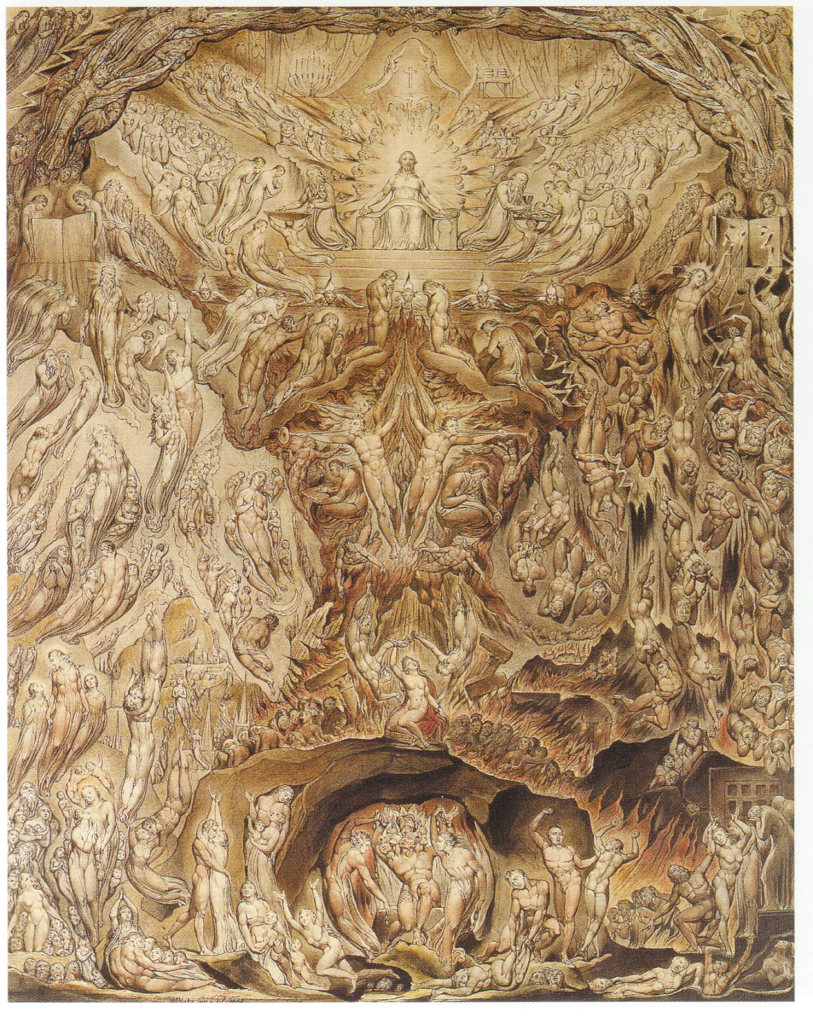A painting by William Blake designed in 1808 before becoming a lost artwork. The seven foot by five foot painting was to be shown in an 1810 exhibit of Blake’s work, but the exhibit was cancelled after problems resulting from an 1809 exhibit of his works. The actual painting was lost, but earlier versions of the work survived.
These include an 1808 watercolour version made for Elizabeth Ilive, wife of George Wyndham, 3rd Earl of Egremont, that was displayed at their Petworth House. A similar illustration in pencil and ink became part of the Rosenwald Collection. Other editions included watercolours made for Thomas Butts in 1806, 1807, and 1809, one for John Flaxman in 1806 (lost), and an 1809 unsold version in tempera. These are in addition to The Day of Judgement made for Blair’s The Grave.
The painting was to be discussed in Blake’s Descriptive Catalogue, a work that, in 1809, described Blake’s feelings about various painters and poets in addition to descriptions of his own works and their various meanings. Blake planned to create another edition for the 1810 collection but the plan was stopped after the exhibition was cancelled. Notes for what Blake planned to write for the works A Vision of the Last Judgement and Public Address survived. The notes were discovered by William Michael Rossetti and first mentioned in a letter to Horace Scudder on 27 November 1864.
Rossetti transcribed the notes for Alexander Gilchrist’s The Life of William Blake, an early biography on Blake. One piece of the work was missing: part of page 71 was sent by Rossetti to Scudder. Blake discussed the 1808 watercolour sold to Ilives in two works, a poem, “The Caverns of the Grave Ive Seen”, written for Ilives provided by Blake with her design. and a description of Ilives’s design for Humphry in January 1808.
Blake claimed to have seen visions throughout his life, and he claimed that they were a common aspect of life. His understanding of these events was, as he explained, similar to the experiences of biblical prophets. He based his portrayal of the apocalypse on his belief that God’s love allowed for a personal apocalypse as part of the human experience. In the notes to the work, he claimed that “whenever any Individual Rejects Error & Embraces Truth a Last Judgement passes upon that Individual”.








